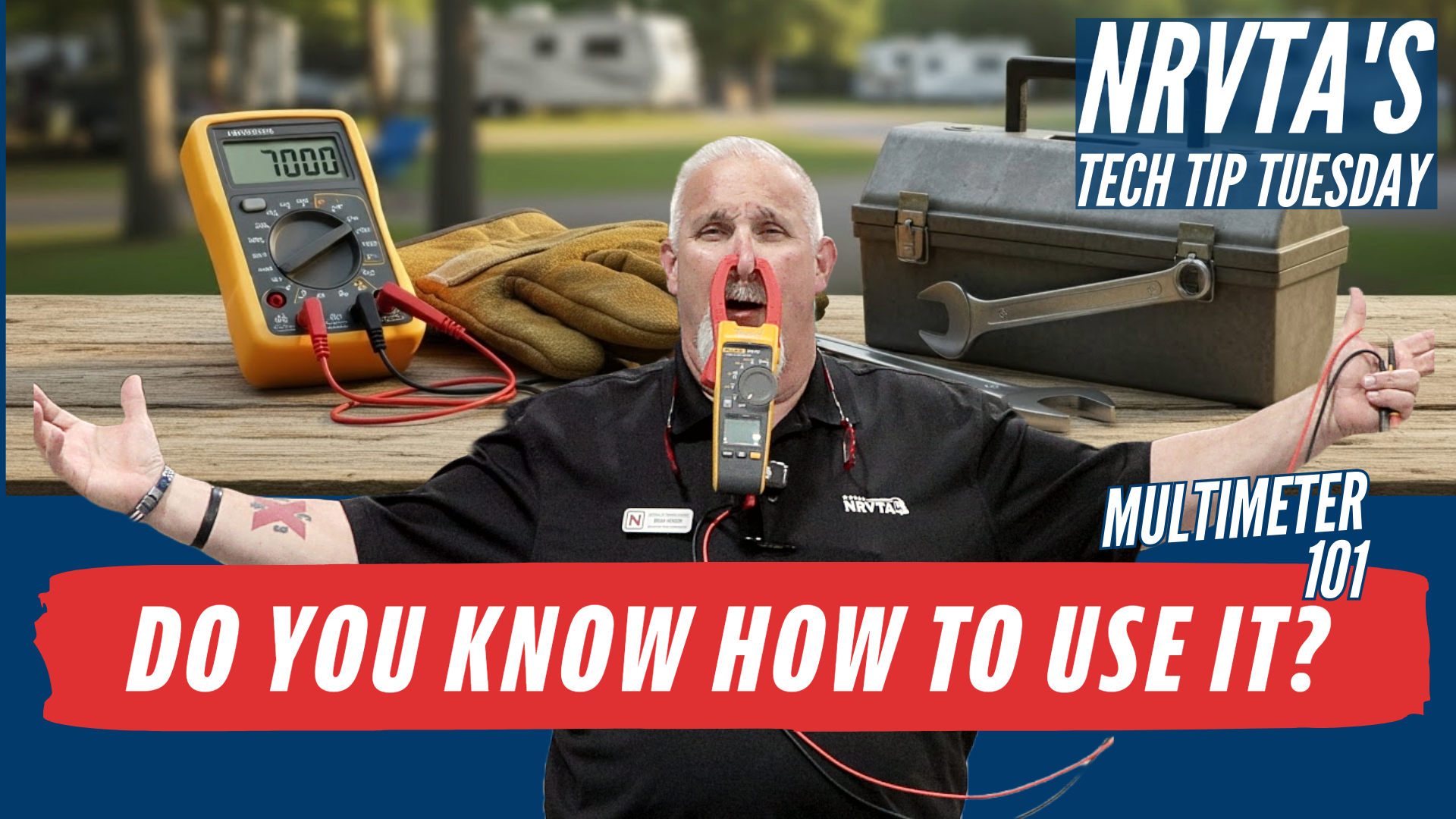Get your RV Technician Certification in as little as 5 weeks!

Tech Tip Tuesday | National RV Training Academy
Welcome back to another Two-Minute Tech Tip Tuesday, proudly brought to you by the National RV Training Academy (NRVTA)—the largest hands-on RV training facility in America! This week, we’re diving into one of the most essential tools every RVer should have and know how to use: the multimeter.
Whether you’re full-timing, weekend camping, or dreaming of becoming a certified RV technician, mastering your multimeter is the key to understanding your RV’s electrical system.
Why You Need a Multimeter
Hi, I’m Brian Henson, Director of Curriculum and Instructors at NRVTA. Today, I’m walking you through the basics of the multimeter: what it does, how to use it properly, and how it can help you troubleshoot your RV’s electrical systems.
Multimeters are essential for:
- Diagnosing power loss
- Verifying voltage levels
- Checking continuity
- Measuring resistance and amperage
Understanding the Four Key Electrical Measurements
Before jumping into the tool itself, let’s break down the four fundamental parts of electricity in your RV:
- Volts (V) – Measures electrical pressure.
- Amps (A) – Measures the flow of electricity.
- Ohms (Ω) – Measures resistance in the wire or circuit.
- Watts (W) – Measures power consumed (Watts = Volts × Amps).
How to Use Your Multimeter – Step-by-Step
1. Voltage Settings
On your multimeter, you’ll see two voltage options:
- DC Voltage (— …): Use this for 12V battery systems and most RV appliances.
- AC Voltage (~): Use this for 120V shore power, your microwave, and standard receptacles.
2. Testing Resistance (Ohms)
Switch your multimeter to the Ω symbol (or horseshoe). This setting helps check for continuity and resistance in wiring.
- Plug in your red and black leads securely.
- Set your multimeter to continuity mode (look for the beep symbol).
- Touch the leads together to ensure it’s working—you should hear a beep.
3. Using the Amp Clamp
Important: Your meter leads don’t measure amps. Use an amp clamp to measure current.
- Open the clamp and place only one wire (not both hot and neutral) inside.
- If you clamp around two wires, the reading will cancel out and show zero.
- Make sure the wire is positioned between the two lines in the clamp for the best reading.
Real-World RV Examples
Checking a Fuse
- Set your multimeter to AC volts.
- Find a known ground (like a bonded metal connection).
- Touch the probe to each side of the fuse. If one side reads 120V and the other reads 0V—you have a blown fuse.
Testing the Refrigerator Heating Element
- Confirm the fridge is in cooling mode.
- Use your amp clamp to check each heating element wire individually.
- Example: Reading 1.8 amps on one wire and 1.7 amps on the other—these are healthy numbers for a working fridge.
Bonus Tips
- Always test your multimeter leads before you begin to ensure accuracy.
- Label and organize your meter settings for quick access when working under pressure.
- Familiarize yourself with your RV’s appliance data plates to calculate watts, amps, or volts as needed using Watt’s Law (W = V × A).
Why Every RVer Should Learn This
Multimeters aren’t just for techs—they’re for anyone who wants to understand their rig and troubleshoot electrical issues confidently. Whether it’s verifying power at a campground, diagnosing a blown fuse, or checking your battery voltage, this tool can save you time, money, and stress.
Want to Learn More?
If this tech tip has sparked your curiosity, consider joining us at NRVTA! We offer:
- Fundamentals Week: Hands-on classes to learn real-world RV systems.
- Advanced Training: Go deeper into diagnostics, repair, and technician certification.
- Home Study Courses: Learn at your own pace from anywhere!
👉 Need a tech near you? Head to https://rvhelp.com to find certified RV professionals.
Remember: Knowledge is power—and when it comes to RV living, a good multimeter puts the power in your hands.
There’s your tech tip!
Stay safe, stay smart, and happy RVing.
Get Registered Today!
Talk to a student advisor to learn more!